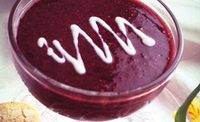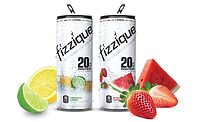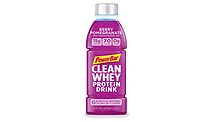Experts agree that the protein ingredients market is in full expansion — and isn’t showing any signs of slowing. The overall protein market is growing about 7 percent each year, and beverage usage for proteins is growing about 10 percent each year, says Sam Wright IV, chief executive officer of The Wright Group, Crowley, La. “The aging of the population, the trend toward snacking as opposed to full meals, and the increase in gluten-free and vegetarian diets are major drivers behind this trend,” he says.
Once considered a beverage ingredient geared toward athletes, protein has gained mainstream exposure and is appealing to a wider range of consumers seeking to fulfill their nutritional needs.
“People need protein to survive,” says Charles Walkley, chief executive officer of New Whey Nutrition LLC, Oviedo, Fla. “The basic equation for protein intake is 1 gram of protein per kilogram of weight. That means an average lifestyle person weighing 180 pounds needs about 81 grams of protein daily.”
Although protein is necessary for maintaining muscles, hair, bones and teeth, consumers are showing understanding of some of protein’s other functional benefits, says Shannon Koski, account manager at the U.S. Dairy Export Council (USDEC), Arlington, Va. Eighty-eight percent of surveyed consumers recognize that protein helps build muscle, 60 percent agree that it creates feelings of satiety, and 60 percent believe a high-protein diet can support weight loss, she says, citing data from a 2012 survey by the International Food Information Council (IFIC), Washington, D.C.
In addition, 60 percent of Americans consider protein when purchasing packaged foods and beverages, and half of Americans are trying to add more protein to their diets, says Holley Grainger, a spokesperson for the Washington, D.C.-based Milk Processor Education Program (MilkPEP), citing data from the IFIC’s “2014 Food & Health Survey.”
Consumers tend to have different reasons for wanting protein. Men tend to seek protein to help grow muscle mass, support bone health, and aid in recovery after a workout, The Wright Group’s Wright says. Women are more interested in protein’s impact on skin, hair, bone and nail health; satiety; and maintenance of lean muscle mass benefits, he says.
Protein also appeals to different age groups. For instance, baby boomers and seniors turn to protein to help fight sarcopenia, according to “Proteins: Classic, Alternative and Exotic Sources,” a June 2014 report by Packaged Facts, a Rockville, Md.-based division of Market Research Group LLC. “[Sarcopenia] is a process that results in a 3-8 percent reduction in lean muscle mass per decade after age 30, affecting 30 percent of people over age 60,” it reports.
Protein also has been proven to confer positive effects on age-related conditions and cardiovascular health, which also might help the functional ingredient appeal to this age group, says Mark Smith, manager of ingredients and turn-key projects at Glanbia Nutritionals, Carlsbad, Calif.
As consumers embrace beverages for convenient protein consumption to meet their various functional needs, the ingredient is spreading into a wider range of beverage categories. The more traditional segments, like protein supplements, meal replacement drinks, sports nutrition powders and ready-to-drink (RTD) beverages, are expected to grow 9.6 percent in the United States this year, and breakfast meal replacement beverages with protein are expected to grow 97 percent this year to $57 million, says Jean Heggie, strategic marketing lead for St. Louis-based DuPont Nutrition & Health, citing data from Chicago-based Euromonitor International and New York-based Nielsen. In addition, the refrigerated fresh protein smoothie segment is expected to grow 16.2 percent this year, she adds, citing Nielsen data.
Protein also has found its way into formulations for carbonated beverages, juices, protein shots, dairy-based smoothies, and pouched purees and gels, says Grace Harris, director of ingredient applications and business development at Hilmar Ingredients, a Hilmar, Calif.-based division of Hilmar Cheese Co. Inc. Protein-fortified coconut water also has proven to be a trendy beverage option, she says.
Which whey to go?
Just as beverage-makers have a variety of beverage segments to play in, they also have a number of protein options, including soy, whey, rice and pea, with which to formulate new products, explains Ted Roszel, beverage architect at Flavorman, Louisville, Ky.
Right now, whey protein is the most popular of these options because of growing demand in Asian markets as well as its rising popularity as a natural, healthy ingredient, particularly for sports, medical and infant nutrition and weight management, according to Innova Market Insights, the Netherlands. “While vegetables lead the list for the number of published protein patents in food and drinks, whey has risen from the eighth position in 2012 to the third position in 2013,” it reports.
Whey proteins, like all dairy-based proteins, contain a higher concentration of branched-chain amino acids and essential amino acids than other sources of protein, which makes them suitable for dietary supplements, Glanbia’s Smith says. They also offer high solubility over a wide range of pH levels, which makes them well-suited for sports beverages, USDEC’s Koski says.
Other milk protein ingredients, like high-protein milk protein concentrates (MPCs), contribute minerals like calcium, magnesium and phosphorus to the protein mix, Koski explains. Because of these nutritional qualities, MPCs are widely used in pediatric and geriatric nutrition, medical nutrition, weight management products, powdered dairy supplements, and sports nutrition products. From a formulation standpoint, MPCs impart a clean dairy flavor without adding significant levels of lactose, she says.
Some consumers prefer plant-based proteins instead of milk-based proteins because they perceive them as better for heart health, weight management and the environment, DuPont Nutrition & Health’s Heggie says. Soy protein — the most commercially available of the plant-based proteins — is lactose- and cholesterol-free; is low in fat and saturated fat; and offers a bland flavor profile, an economic alternative to dairy-based proteins, and versatility to blend with other proteins, she says.
Flaxseed, another plant-based protein option, provides ALA omega-3s, dietary fiber and lignans in addition to dietary protein. This form of protein tends to be easy to incorporate into RTD beverages because it imparts a smooth texture and good taste profile, Glanbia’s Smith says.
Although the different forms of protein are beneficial on their own, research shows that they are even stronger together. A study conducted by DuPont Nutrition & Health and the University of Texas Medical Branch found that soy-dairy protein blends can be an effective alternative for active consumers seeking to support muscle health. In a double-blind, randomized clinical trial of 16 healthy subjects in the 19-30 age group, protein beverages that included a blend of whey, casein and soy proteins in a 1:2:1 ratio showed a prolonged increase in amino acid net balance across the leg muscle during early post-exercise recovery, suggesting prolonged muscle building when compared with whey protein alone, the company says.
What consumers want
In spite of all of these various benefits, consumers are more concerned about the amount of protein in a beverage than the type of protein, DuPont Nutrition & Health’s Heggie says. “For instance, if a consumer’s focus is on weight management, a protein beverage with 10 grams of protein per serving … can be appropriate as a meal replacement,” she explains. “A sports nutrition consumer might be interested in a protein-rich beverage as a supplement with a range of 25 grams or more of protein per serving. … For a senior consumer, research suggests that 25-30 grams of high-quality protein at each meal helps support muscle protein maintenance.”
The other major feature consumers look for is good taste, Hilmar's Harris says. However, this aspect of beverage formulation tends to pose a challenge, experts note.
Proteins have a taste profile that is readily detected by human senses and typically is included in high amounts in formulations, resulting in a disproportional effect on beverage flavors compared with other ingredients, according to Geneva, Ill.-based Fona International’s 2014 Trend Snapshot report “Flavor Solutions for Protein.”
In order to formulate a great-tasting protein beverage, Fona recommends that beverage-makers mask the protein flavors with congruent flavors. For example, if formulating with a pea protein, which tends to impart strong earthy notes, beverage-makers could add chocolate, nut or other flavors with earthy aspects to overcome the protein flavors, the company says. Similarly, if working with whey protein, it suggests that beverage-makers can use grapefruit notes to balance the astringent flavor. For soy proteins, beverage-makers can use vanilla bean flavors to balance the beany, bitter flavor, it adds.
By balancing protein servings with an approachable taste profile, beverage-makers can continue to fuel the trending protein beverage market and provide consumers with a convenient source for nutrition.












